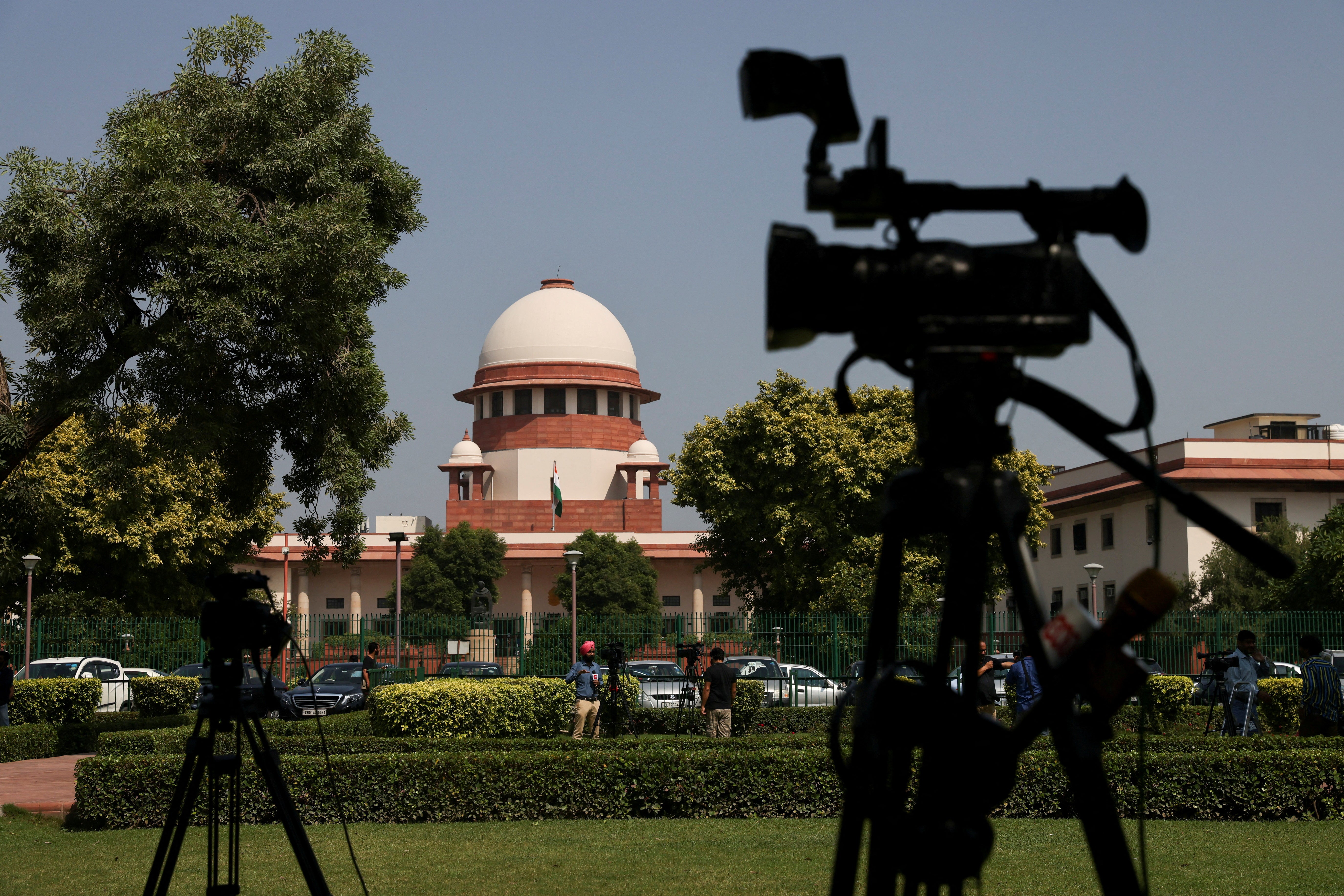Top Indian court’s new statue of goddess of justice without blindfold sparks debate
New statue featuring Lady Justice with her eyes open marks significant departure from earlier representation

Your support helps us to tell the story
From reproductive rights to climate change to Big Tech, The Independent is on the ground when the story is developing. Whether it's investigating the financials of Elon Musk's pro-Trump PAC or producing our latest documentary, 'The A Word', which shines a light on the American women fighting for reproductive rights, we know how important it is to parse out the facts from the messaging.
At such a critical moment in US history, we need reporters on the ground. Your donation allows us to keep sending journalists to speak to both sides of the story.
The Independent is trusted by Americans across the entire political spectrum. And unlike many other quality news outlets, we choose not to lock Americans out of our reporting and analysis with paywalls. We believe quality journalism should be available to everyone, paid for by those who can afford it.
Your support makes all the difference.A newly unveiled statue of the goddess of justice without her customary blindfold has prompted discussion about the judiciary’s role in modern India.
The statue, now situated in the Indian Supreme Court’s judges’ library, features “Lady Justice” with her eyes open, with the constitution in her hand replacing the customary sword symbolising authority and punishment.
This redesign, commissioned by outgoing chief justice Dhananjaya Yeshwant Chandrachud, is intended to convey the message that the law is not blind and it sees and upholds the rights of all individuals equally.
“The law is not blind; it sees everyone equally,” chief justice Chandrachud stated during the unveiling, reported NDTV.
The chief justice is scheduled to demit office on 10 November. He has nominated Justice Sanjeev Khanna as his successor for his position. Justice Khanna is slated to serve a tenure of six months before retiring on 13 May.
The removal of the blindfold – a long-standing symbol of impartiality – indicates an evolving understanding of justice that distances itself from colonial legacies, similar to recent reforms that replaced the Indian Penal Code with the Bharatiya Nyaya Sanhita.
Lady Justice is thought to represent the allegorical embodiment of law and the moral principles that guide society. In ancient Greece, the Hellenic deity Themis was commonly portrayed with scales and a sword, symbolising divine law and justice. While the figure of Lady Justice emerges from Justitia, the goddess of justice within Roman mythology, the symbolism of the scales first appeared in ancient Egypt with Maat, the goddess of truth and justice.
“He (Chandrachud) said the statue should have the constitution in one hand and not a sword, so that a message goes out to the country that she dispenses justice according to the constitution. The sword is a symbol of violence but courts deliver justice according to constitutional laws,” a source from the chief justice’s office told the news outlet.
According to sources, the transformation of Lady Justice aims to signal a new legal identity for India, embodying a justice system that is aware, vigilant and inclusive, reported the Business Standard.
“Justice Chandrachud believes that India should move forward from the British legacy,” a source explained. The statue now embodies a commitment to justice based on constitutional principles rather than retributive measures, aligning with the judiciary’s protective role in upholding rights and equality.
While the sword has been replaced with the constitution, the scales of justice in her right hand have been retained, symbolising the balance of competing arguments in court. An official remarked, “the scales of justice represent balance in society, ensuring that facts and arguments by both sides are weighed before arriving at a conclusion”.
Social media users were quick to post their opinions on the new statue.
“The thing Lady Justice needs the most is a watch,” wrote a user, likely referring to the significant delays in the hearing and disposition of cases in Indian courts.
Another user said taking off the blindfold from Lady Justice “displays tremendous self awareness – the law in India is anything but impartial”.
Others were quick to hail the move, calling it a “historic day for India’s judiciary”.
Join our commenting forum
Join thought-provoking conversations, follow other Independent readers and see their replies
Comments